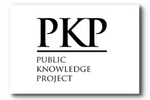Future perspectives of pharmacological treatment for Alzheimer's disease: an integrative review
DOI:
https://doi.org/10.55892/jrg.v8i18.2025Keywords:
Alzheimer’s disease, Innovation, Therapeutic approachesAbstract
Alzheimer’s Disease (AD) is one of the most prevalent neurodegenerative conditions of the Central Nervous System (CNS), characterized by the abnormal accumulation of beta-amyloid (Aβ) plaques and neurofibrillary tangles, leading to neuronal degeneration and the progressive impairment of cognitive functions. This process manifests as memory difficulties, trouble recognizing people and places, as well as impairments in performing daily activities. With an estimated 150 million people expected to be affected by 2050, AD represents a growing public health challenge in Brazil and worldwide. In light of this scenario, this study aims to understand the effectiveness of new therapeutic approaches for AD by evaluating their impact on the disease’s pathophysiological mechanisms. To this end, an integrative literature review was conducted, analyzing 38 articles published between 2020 and 2025, selected from the Scientific Library Online (Scielo), PubMed, and the Virtual Health Library (BVS) databases. The analyzed data indicate that AD patients present a deficit of acetylcholine and its receptors, justifying the use of cholinesterase inhibitors such as Rivastigmine, Donepezil, and Galantamine to prolong the half-life of this neurotransmitter. However, new therapies are emerging as promising alternatives, focusing on different pathophysiological aspects of AD. Among these approaches are anti-amyloid, anti-tau, anti-neuroinflammatory, and genetic therapies, such as those associated with apolipoprotein E (APOE). These innovative strategies are essential for patients who do not respond adequately to conventional treatments, highlighting the need for further research and the expansion of therapeutic possibilities to slow disease progression.
Downloads
References
BLUMENFELD, J. et al. Cell type-specific roles of APOE4 in Alzheimer disease. Nature Reviews Neuroscience, v. 25, n. 2, p. 91-110, 8 jan. 2024.
BRUCKI, S. M. D. et al. Cannabinoids in Neurology - Position paper from Scientific Departments from Brazilian Academy of Neurology. Arquivos de Neuro-Psiquiatria, v. 79, n. 4, p. 354–369, abr. 2021.
CARDOSO, A. M. S. et al. Perspectivas atuais da terapia antiamiloide para a Doença de Alzheimer. Revista Neurociências, v. 30, p. 1-16, 2022.
CHEN, H. et al. Neuroinflammation of Microglial Regulation in Alzheimer's Disease: Therapeutic Approaches. Molecules, v. 29, n. 7, p. 1478, 2024.
CHEN, Y.; YU, Y. Tau and neuroinflammation in Alzheimer’s disease: interplay mechanisms and clinical translation. Journal of Neuroinflammation, v. 20, p. 165, 2023.
DANTAS, H. L. de L. et al. Como elaborar uma revisão integrativa: sistematização do método científico. Revista Recien - Revista Científica de Enfermagem, v. 12, n. 37, p. 334–345, 2022.
FREIRE, D.; SILVA, A.; BORIN, F. A fisiopatologia da doença de Alzheimer. Revista Terra & Cultura: Cadernos de Ensino e Pesquisa, v. 38, ed. especial, p. 237-251, 2022.
GRATUZE, M. et al. APOE Antibody Inhibits Aβ-Associated Tau Seeding and Spreading in a Mouse Model. Annals of Neurology, v. 91, n. 6, p. 847-852, 2022.
HUANG, L. K.; CHAO, S. P.; HU, C. J. Clinical trials of new drugs for Alzheimer disease. Journal of Biomedical Science, v. 27, n. 1, p. 18, 2020.
HUO, S. et al. Effects of eszopiclone on sleep quality and cognitive function in elderly patients with Alzheimer's disease and sleep disorder: A randomized controlled trial. Brain and Behavior, v. 12, n. 2, e2488, 2022.
JOODI, S. A.; IBRAHIM, W. W.; KHATTAB, M. M. Reutilização de medicamentos em modelos experimentais da doença de Alzheimer. Inflammopharmacology, v. 33, n. 1, p. 195–214, 2025.
LAABOUDI, F. Z. et al. In the weeds: A comprehensive review of cannabis; its chemical complexity, biosynthesis, and healing abilities. Toxicology Reports, v. 13, p. 101685, 2024.
LANFRANCO, M. F.; NG, C. A.; REBECK, G. W. ApoE Lipidation as a Therapeutic Target in Alzheimer's Disease. International Journal of Molecular Sciences, v. 21, n. 17, p. 6336, 2020.
LAURETTI, E.; PRATICÒ, D. Alzheimer’s disease: phenotypic approaches using disease models and the targeting of tau protein. Expert Opinion on Therapeutic Targets, v. 24, n. 4, p. 319-330, 2020.
LI, Y. et al. ApoE4 reduction: An emerging and promising therapeutic strategy for Alzheimer's disease. Neurobiology of Aging, v. 115, p. 20-28, 2022.
LITVINCHUK, A. et al. Apolipoprotein E4 Reduction with Antisense Oligonucleotides Decreases Neurodegeneration in a Tauopathy Model. Annals of Neurology, v. 89, n. 5, p. 952-966, 2021.
MERIGHI, S. et al. Microglia and Alzheimer's Disease. International Journal of Molecular Sciences, v. 23, n. 21, p. 12990, 2022.
MIRANDA, A. et al. Selective Secretase Targeting for Alzheimer’s Disease Therapy. Neurotherapeutics, v. 1, p. 1-17, 2021.
MOSALAM, E. M. et al. Insights mecanicistas da eficácia neuroprotetora de pontos quânticos de carbono carregados com verapamil contra neurotoxicidade induzida por LPS em ratos. International Journal of Molecular Sciences, v. 25, n. 14, p. 7790, 2024.
PAGANO, K. et al. Natural Compounds as Inhibitors of Aβ Peptide Aggregation: Chemical Requirements and Molecular Mechanisms. Frontiers in Neuroscience, v. 14, p. 619667, 2020.
PASCHALIDIS, M. et al. Trends in mortality from Alzheimer's disease in Brazil, 2000-2019. Epidemiologia e Serviços de Saúde: Revista do Sistema Único de Saúde do Brasil, v. 32, n. 2, e2022886, 2023.
PIRES, M.; REGO, A. C. ApoE4 and Alzheimer's Disease Pathogenesis-Mitochondrial Deregulation and Targeted Therapeutic Strategies. International Journal of Molecular Sciences, v. 24, n. 1, p. 778, 2023.
QU, L. et al. Apolipoprotein E in Alzheimer's Disease: Focus on Synaptic Function and Therapeutic Strategy. Molecular Neurobiology, 2024.
RAULIN, A. C. et al. ApoE in Alzheimer's disease: pathophysiology and therapeutic strategies. Molecular Neurodegeneration, v. 17, n. 1, p. 72, 2022.
SARMENTO, Gabriel Von Flach. Doença de Alzheimer: perfil epidemiológico e impacto econômico ao Sistema Único de Saúde, no Brasil, entre 2012 e 2021. 2023. Trabalho de conclusão de curso (graduação) – Universidade Bahiana, Salvador, 2023.
SILVA, T. M. D.; OLIVEIRA, M. E. P. de L.; GAMA, F. O. da; ROSA IOP, R. da; SILVA, F. C. da. Internação hospitalar de idosos por Doença de Alzheimer no Brasil, e custo associado: estudo ecológico. Saúde e Pesquisa, v. 16, n. 2, p. 1–13, 2023. Disponível em:
SOEDA, Y.; TAKASHIMA, A. New insights into drug discovery targeting tau protein. Frontiers in Molecular Neuroscience, v. 13, 2020.
STELLA, F. et al. Medical cannabinoids for treatment of neuropsychiatric symptoms in dementia: a systematic review. Trends in Psychiatry and Psychotherapy, v. 43, n. 4, p. 243–255, 2021.
SUN, Y. Y.; WANG, Z.; HUANG, H. C. Roles of ApoE4 on the Pathogenesis in Alzheimer's Disease and the Potential Therapeutic Approaches. Cellular and Molecular Neurobiology, v. 43, n. 7, p. 3115–3136, 2023.
TAKATA, K.; GINHOUX, F.; SHIMOHAMA, S. Roles of microglia in Alzheimer's disease and impact of new findings on microglial heterogeneity as a target for therapeutic intervention. Biochemical Pharmacology, v. 192, 114754, 2021.
TAKATA, K. et al. Nicotinic Acetylcholine Receptors and Microglia as Therapeutic and Imaging Targets in Alzheimer's Disease. Molecules, v. 27, n. 9, p. 2780, 2022.
THAKUR, S. et al. Neuroinflammation in Alzheimer's Disease: Current Progress in Molecular Signaling and Therapeutics. Inflammation, v. 46, n. 1, p. 1–17, 2023.
TOLAR, M.; ABUSHAKRA, S. Aducanumab, gantenerumab, BAN2401, and ALZ-801—the first wave of amyloid-targeting drugs for Alzheimer’s disease with potential for near-term approval. Alzheimer’s Research & Therapy, v. 12, p. 95, 2020.
VANDEVREDE, L.; BOXER, A. L.; POLYDORO, M. Targeting tau: Clinical trials and novel therapeutic approaches. Neuroscience Letters, v. 731, p. 134919, 2020.
VAZ, M.; SILVESTRE, S. Alzheimer's disease: Recent treatment strategies. European Journal of Pharmacology, v. 887, p. 173554, 2020.
WANG, L. X. et al. Revolucionando a doença de Alzheimer precoce e o diagnóstico de comprometimento cognitivo leve: uma meta-análise de aprendizagem profunda por ressonância magnética. Arquivos de Neuro-Psiquiatria, v. 82, n. 8, p. 1–10, 2024.
YU, T. W.; LANE, H. Y.; LIN, C. H. Novel Therapeutic Approaches for Alzheimer's Disease: An Updated Review. International Journal of Molecular Sciences, v. 22, n. 15, p. 8208, 2021.
ZHANG, M. M. et al. The growth of siRNA-based therapeutics: Updated clinical studies. Biochemical Pharmacology, v. 189, p. 114432, 2021.
ZHANG, Y. et al. Tauopatias: novas perspectivas e desafios. Molecular Neurodegeneration, v. 17, n. 28, 2022.
ZHAO, Y. et al. Anti-oxidative stress and cognitive improvement of a semi-synthetic isoorientin-based GSK-3β inhibitor in rat pheochromocytoma cell PC12 and scopolamine-induced AD model mice via AKT/GSK-3β/Nrf2 pathway. Experimental Neurology, v. 380, p. 114881, 2024.











































